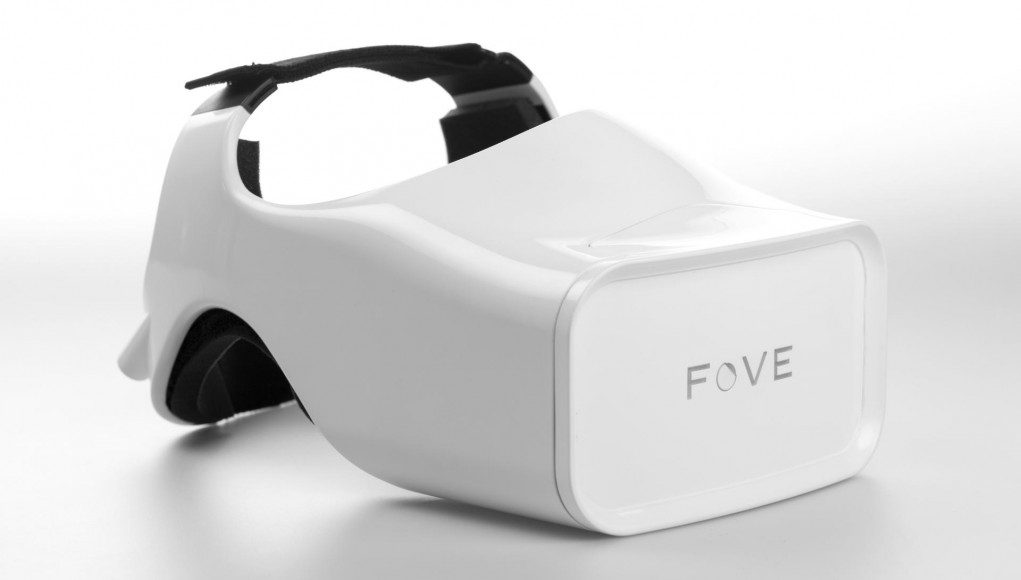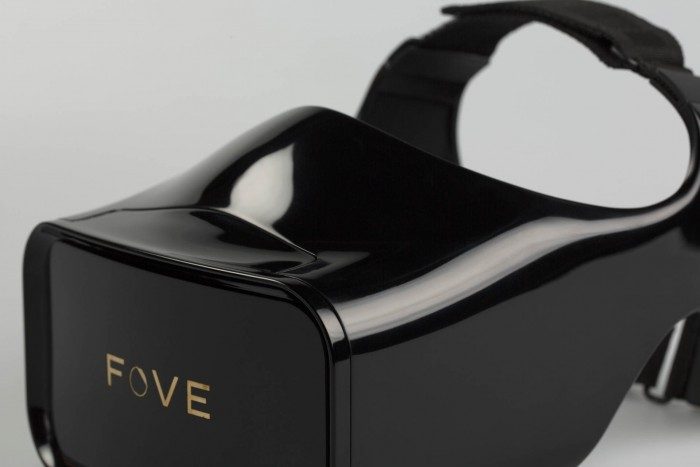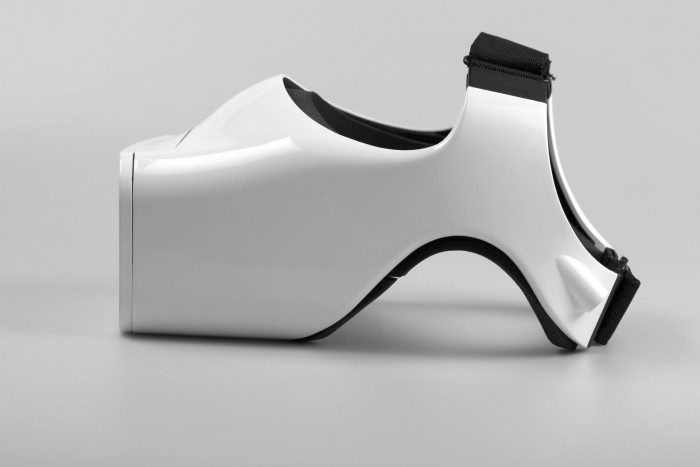FOVE is a Japanese technology company who are endeavoring to tackle an issue that will likely become a focus for the VR industry sooner than you think, eye-tracking in virtual reality. The company’s new headset employs gaze-detection for input, and today they launch their first Kickstarter campaign in order to get the hardware out into the community.
We’ve followed FOVE‘s progress with their eye-tracking VR headset – currently unique within the industry – for some time now. From an initially rough experience at Engadget Expand last year with an early prototype, to a more recent and far more impressive demonstration at CES in January. It was clear, particularly from that latest demo, that the company was making rapid progress in solving problems involved in the business of reading a user’s gaze within an enclosed headset.
The prospect of another form of natural human input is compelling enough. Imagine making convincing eye contact with a virtual avatar because the game knows exactly where you’re looking, focusing on distant objects and the game’s depth of field adjusting to match or aiming at targets just by looking at them.
Beyond that, the heavy rendering challenges posed by virtual reality applications could possibly be mitigated by using techniques such as FOVeated rendering, the practice of rendering only what the eye can see dependent on the user’s gaze direction.
Yuka Kojima, CEO and Co-Founder of FOVE, explains, “Our eye-tracking technology is able to read very subtle eye movements and translate these into user-intention and emotion. By adding this extra recognition, we can not only control the objects in VR, but also bring real human connection into virtual reality.”
FOVE Eye-Tracking VR Headset Kickstarter
Today, FOVE have announced that they’re launching a Kickstarter campaign designed to ship this technology to developers in order for the potential uses of this technology to be fully explored by the community.
They’re aiming to raise $250,000 to finalize their development process and start manufacturing. Pledge levels start at $349 for a single eye-tracking headset to $1799 for a five FOVE developer pack. Rewards are projected to ship to backers by March 2016.
To give you an idea of what’s possible with the FOVE, this remarkable video depicting a disabled child playing a piano rigged to respond to his gaze-based input whilst wearing a FOVE headset, is about as good as it gets.
Technical Specifications:
- Weight: 400g
- Display Size: 5.8in
- Resolution: WQHD (2560 x 1440)
- Field of View: 100 Degrees (non specific)
- Frame Rate: 60FPS (90FPS projected)
- Head Tracking: “Low latency 6/9 DoF IMO”
- Eye Tracking Sensors: 2 x 0.2 degree (projected) @ 120Hz
The question of content is of course at the heart of this Kickstarter campaign, without compelling applications, good hardware is useless. FOVE reckon they have a handle on this. The company claims that “The FOVE platform is compatible with content developed using Unity, Unreal, and Cryengine, making it effortless for developers to port existing content to the FOVE ecosystem and providing robust developer support”. Additionally, FOVE are also today announcing a partnership with VR application portal WEARVR, where “users will gain access to the VR app store that is home to a great range of quality VR content.”
The potential for the technology is undoubtedly impressive, but this is early days for gaze-based input, with many challenges still to be overcome. That said, pushing developer kits out into the world is exactly the sort of approach a certain other VR headset manufacturer used to tackle these issues, with great success. How long it’ll be until we see this tech inside headsets for sale to the general public is as yet unclear however.
Disclosure: At the time of publishing, FOVE is running advertisements on Road to VR









